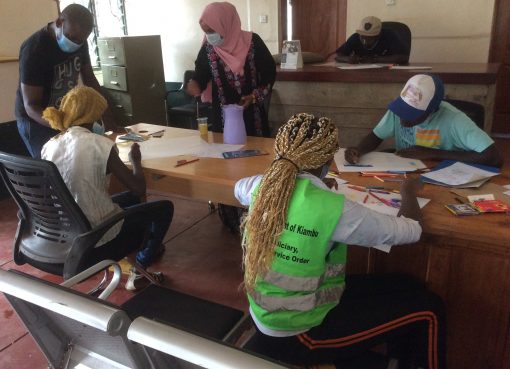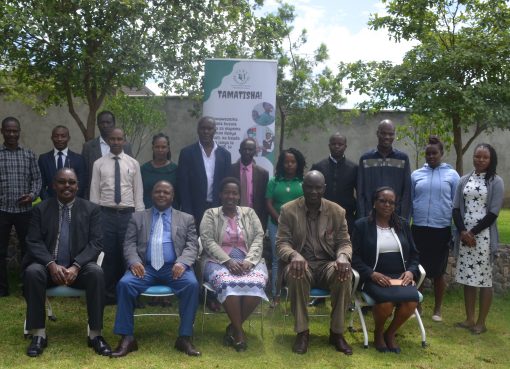The County Government of Nakuru is implementing a raft of strategies through public-private partnerships to enhance value chains in crops and livestock towards supporting the pillars of food and nutrition security, growing exports, and reducing imports.
This is part of the devolved unit’s strategy to shift from local markets to emerging and fast-growing regional markets within the East African Community (EAC) and attract premium prices for farmers’ produce.
Governor Susan Kihika indicated that value addition and agro-processing of agriculture and livestock products represents a huge potential source of livelihoods for farmers adding that her administration has invested huge resources to promote dairy, potato, maize, pyrethrum, avocado and oil crops value chains among others.
Ms Kihika further disclosed that in line with the Kenya Kwanza manifesto, her administration had also put in place measures to revolutionise agriculture from a subsistence activity to an agro-enterprise that provides residents in the region with employment and a source of gainful employment.
“It is the conviction of the Kenya Kwanza leadership that sustained agricultural growth is critical in uplifting standards as well as generating rapid growth to this nation,” Governor Kihika said.
The Governor made the remarks after she led Deputy Governor David Kones, County Executive Committee Members (CECMs) and Chief Officers in a closed-door consultative meeting with members of the President’s Council of Economic Advisors (CEA) under stewardship of Senior Advisor and Head of Economic Transformation Secretariat Dr Augustine Cheruiyot.
“I have advised my team to work on the comparative advantage of a value chain for each of the eleven (11) Sub-Counties and 55 electoral wards to act as an anchor for increased productivity, marketing, and processing. My officers have firm instructions to work closely with the State House team in driving the development agenda,” stated Ms Kihika.
The country, the Governor observed, has long exported commodities in raw form. She affirmed that with increased investment in value addition, volumes of Kenya’s enriched commodities and finished products will increase and this will help the country stake a bigger claim to local, regional, and global market shares.
According to the Food and Agriculture Organisation (FAO), the full potential of agriculture in terms of economic benefits is mainly hidden in the value-addition component of the production process.
Economists have singled out access to appropriate machinery as one of the major challenges facing Kenyan enterprises which is limiting most local business people to being export brokers of raw produce.
Ms Kihika pointed out that any value addition to crops and livestock products adds a percentage of increased financial value to the produce and has the effect of improving the incomes of the local farmers.
She stated that it is in this segment of the production chain that more jobs can be created; foreign exchange can be expanded as a result of the export of finished products and the national output of the economy can be enhanced.
The World Bank has projected that by 2030, the size of the food and agribusiness industry in Africa will reach 1 trillion United States dollars’ worth. This will mainly have to do with value addition to the food-related produce coming from the farms.
Ms. Kihika elaborated that value-addition activities in the crop and livestock chain include processing, drying, use of modern farming methods, use of fertilisers, refrigeration, preservation, eco-packaging, transportation, using precision analytics to make on-farm decisions, branding or generally transforming a product to globally suitable and acceptable standards.
The Governor said a major contributor to food scarcity in the country has been the massive post-harvest losses that occur due to low-value addition and inadequate cold chain facilities.
The Food and Agriculture Organisation estimates that Kenya losses between 20 – 50 percent of its agricultural production due to post-harvest losses.
Ms Kihika stated that the county government was making deliberate efforts to set up milk cooling plants and potato cold storage facilities along the supply chains towards the endeavour for value addition in the devolved unit.
She said her administration was supporting farmers to form or join cooperatives to help them better tap market opportunities and attract Government investments.
“Agriculture can transform Nakuru County with the cooperative movement serving as the fulcrum for increased maize, pyrethrum, potatoes, dairy, leather, beef, beans, tea, coffee, and horticultural productivity,” added Ms Kihika.
She said the Government had avenues to assist farmers but the lack of proper structures delayed such processes.
“Most farmers in crop and dairy sectors are in production as individuals, which makes it hard for them to tap maximum market potential. The Government best assists farmers in organised groups,” said Ms Kihika.
She noted that Cooperatives are best placed to coordinate agricultural production, offer technological input, training, and research for farmers, credit services to farmers and to provide extension services.
The Governor revealed that her administration was strengthening the cooperative movement to enable farmers to enhance high-quality production and aggregate produce to attract foreign markets.
She said more than 500 farmers have been trained on how to sell as a group and negotiate contract sales with larger buyers, adding that by aggregating their produce, these farmers are attracting larger buyers who offer higher prices.
Towards increasing productivity in agriculture, Ms Kihika stated that her government was fixing the structural problems plaguing the sector.
This included providing extension services, improving infrastructure for irrigation, and streamlining access to local and regional markets and deployment of agricultural risk management instruments.
To create concentrated and sustainable farming that can yield and feed more, the county, according to the Governor, was promoting greenhouse farming and irrigated agriculture to enable farmers to utilise the small arable land available.
Through partnerships, the devolved unit was also facilitating soil mapping and testing using remote sensing and GIS tools towards intense and more accurate interventions.
Ms Kihika said intense capacity building on farming strategies, techniques, and data to increase efficiency of agricultural produce was being carried out.
The two levels of government were collaborating to support farmers with a view to improving yield and farmers’ earnings particularly in soil fertility to enhance crop production and livestock breed improvement in dairy farming.
She said they have also developed deliberate efforts to boost AI services and trained farmers how to handle their crops after harvest to minimise losses and to meet market requirements.
By Anne Mwale and Jedidah Gitau



